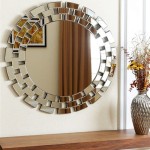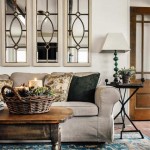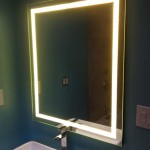```html
Silver Leaf Mirror: A Timeless Reflection of Elegance and Craftsmanship
Silver leaf mirrors, distinguished by their intricate application of thin silver sheets to the back of the glass, represent a pinnacle of decorative artistry. This technique, often employed to imbue mirrors with an antique or distressed aesthetic, results in a subtle shimmer and unique character not found in conventionally manufactured mirrors. The process and resulting visual effect have secured silver leaf mirrors a prominent place in interior design, fine art, and restoration projects for centuries.
The inherent beauty of a silver leaf mirror lies in its ability to transform light. Unlike the perfectly uniform reflective surface of modern mirrors, the slightly uneven application of the silver leaf creates a play of light and shadow. This textural variance adds depth and dimension, creating a focal point that is both captivating and visually appealing. This article will explore the creation, characteristics, applications, and care of silver leaf mirrors, providing a comprehensive understanding of this refined art form.
The Art of Silver Leafing: Creating the Mirror's Distinctive Finish
The creation of a silver leaf mirror is a meticulous process involving several distinct stages. The foundation is a sheet of glass, which must be impeccably cleaned and prepared to receive the silver leaf. This preparation typically includes applying a specialized adhesive or mordant that will facilitate the adherence of the delicate silver sheets.
Once the mordant is applied and reaches the correct tackiness, the silver leafing process begins. Silver leaf is extremely thin, often less than 0.1 microns, and requires careful handling. It is typically applied using a gilder's tip, a specialized brush that attracts the leaf using static electricity. The leaf is then carefully laid onto the prepared glass surface, overlapping each sheet slightly to ensure complete coverage.
After the silver leaf is applied, it is gently burnished to ensure proper adhesion and to remove any air bubbles. This burnishing process also helps to create the desired level of texture and variation in the reflective surface. The excess silver leaf is then removed, and the back of the mirror is sealed with a protective coating. This coating prevents oxidation of the silver and protects the delicate leafing from damage.
The final step often involves adding layers of tinted varnish or paint to further enhance the antique appearance. This process, known as distressing, can involve techniques such as applying darker shades in crevices or gently abrading the surface to reveal the underlying silver leaf. The degree of distressing can be customized to achieve a wide range of aesthetic effects, from subtly aged to heavily weathered.
Key Characteristics and Distinguishing Features of Silver Leaf Mirrors
Silver leaf mirrors possess several key characteristics that distinguish them from standard mirrors. These features contribute to their unique aesthetic appeal and make them a sought-after element in interior design. The most notable characteristic is the subtle, warm tone of the reflected image. Unlike the stark, bright reflection of modern mirrors, silver leaf mirrors offer a softer, more diffused reflection that is often considered more flattering.
Another distinguishing feature is the inherent variation in the reflective surface. Due to the manual application of the silver leaf, no two silver leaf mirrors are exactly alike. The subtle imperfections and variations in the leafing process create a unique texture and depth that is not found in machine-produced mirrors. These imperfections are not considered flaws but rather integral aspects of the mirror's character and charm.
The distressed appearance is also a hallmark of silver leaf mirrors. This distressed look can range from subtle aging to more pronounced weathering, depending on the desired aesthetic. The distressing process often involves techniques such as cracking, etching, or staining the silver leaf to create the illusion of age and wear. This distressed appearance contributes to the mirror's antique or vintage appeal and makes it a versatile element in a variety of design styles.
Finally, the perceived quality of a silver leaf mirror is often higher compared to mass-produced mirrors. The handcrafted nature of the silver leafing process and the attention to detail involved in creating each mirror contribute to its perceived value and exclusivity. Silver leaf mirrors are often viewed as investment pieces that can add elegance and character to any space.
Applications Across Various Design Styles and Settings
The versatility of silver leaf mirrors allows them to be incorporated into a wide range of design styles and settings. Their antique or vintage aesthetic makes them a natural fit for traditional or period-inspired interiors. In these settings, silver leaf mirrors can be used as focal points above fireplaces, in entryways, or as decorative accents in living rooms and dining rooms.
However, silver leaf mirrors are not limited to traditional styles. They can also be effectively used in more contemporary or modern spaces to add a touch of warmth and texture. In minimalist interiors, a single silver leaf mirror can serve as a statement piece, adding visual interest and softening the stark lines of the design. In eclectic spaces, silver leaf mirrors can be used to create a sense of cohesion and to tie together disparate elements.
Beyond residential applications, silver leaf mirrors are also frequently used in commercial settings, such as hotels, restaurants, and retail spaces. Their elegant and sophisticated appearance can enhance the ambiance of these spaces and create a sense of luxury. In restaurants, silver leaf mirrors can be used to create a more intimate and inviting atmosphere. In retail spaces, they can be used to reflect light and create a more spacious and visually appealing environment.
Furthermore, silver leaf mirrors are often utilized in art installations and restoration projects. Artists may incorporate silver leaf mirrors into their work to create unique and thought-provoking pieces. In restoration projects, silver leaf mirrors are used to recreate the original appearance of antique furniture or architectural elements. Their ability to replicate the look and feel of aged silver makes them an invaluable tool for preserving historical artifacts.
Maintaining the Beauty of Silver Leaf: Care and Preservation
Despite their delicate appearance, silver leaf mirrors can be relatively easy to care for with proper maintenance. The primary concern is protecting the silver leaf from moisture and excessive handling. Moisture can cause the silver to tarnish or corrode, while excessive handling can damage the delicate surface.
To clean a silver leaf mirror, it is recommended to use a soft, dry cloth. Avoid using harsh chemicals or abrasive cleaners, as these can damage the silver leaf or the protective coating. For more stubborn dirt or grime, a slightly damp cloth can be used, followed by a thorough drying with a clean, soft cloth. It is important to avoid allowing water to seep behind the mirror, as this can lead to damage.
In addition to regular cleaning, it is important to protect silver leaf mirrors from direct sunlight and extreme temperature fluctuations. Prolonged exposure to sunlight can cause the silver leaf to fade or discolor, while extreme temperature fluctuations can cause the glass to crack or the silver leaf to separate from the backing. It is best to position silver leaf mirrors away from direct sunlight and in areas with stable temperature and humidity levels.
For antique silver leaf mirrors, it may be advisable to consult with a professional conservator for specialized cleaning and repair services. A conservator can assess the condition of the mirror and recommend the appropriate treatment methods to preserve its original beauty and value. They can also provide advice on long-term storage and display to ensure the longevity of the mirror.
By following these simple care and preservation guidelines, owners can ensure that their silver leaf mirrors retain their beauty and value for generations to come. The unique aesthetic and handcrafted nature of these mirrors make them a timeless addition to any space, and their enduring appeal ensures their continued popularity in the world of interior design and fine art.
```
Antique French Louis Philippe Style Rectangular Silver Leaf Mirror

American Silver Leaf Mirror Ammi Ribar Antiques Fine Period Frames

19th Century Silver Leaf Mirror Mi9026181 Lorfords Antiques

Ornate Silver Leaf Rococo Wall Mirror Juliettes Interiors

Louis Phillips Antique Silver Leaf Mirror Park Eighth

How To Silver Leaf A Mirror Frame Decor Adventures

Gold And Silver Leaf Mirror Home With Hechart

Antique French Louis Philippe Style Rectangular Silver Leaf Mirror

Reflect Silver Leaf Mirror 2 Size Options

Proantic Large Art Deco Mirror Black Lacquer And Silver Leaf France








